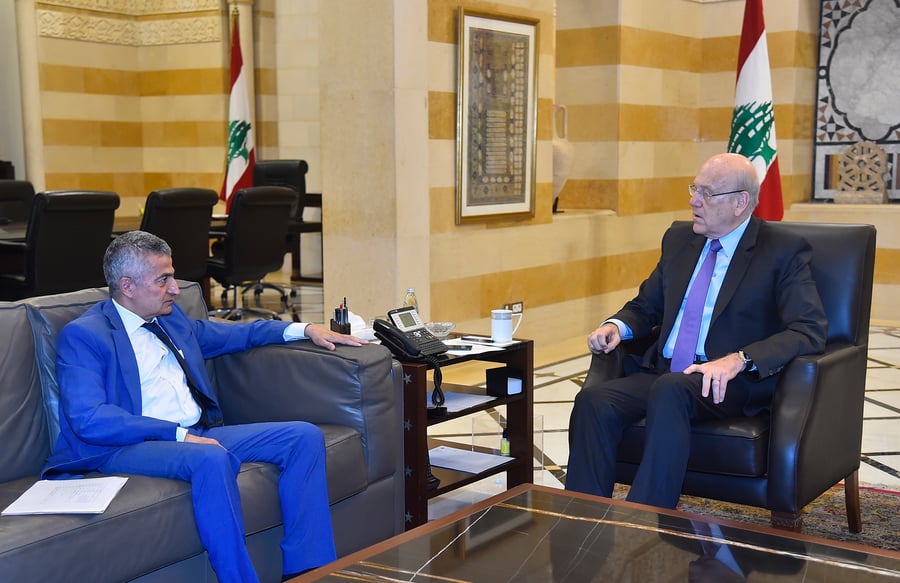Surprisingly, Lebanon’s Finance Minister, Youssef al-Khalil, unveiled the government’s decision to stop using the official exchange rate and adjust it to 15,000 liras from 1,507 liras, a rate that has been in place since 1997.
The decision, announced in a statement by Al-Khalil to Reuters and followed by a statement issued by the ministry, raised confusion and several questions about its timing and the way to direct its implementation without being part of a comprehensive economic recovery plan.
It was remarkable that the decision came on the eve of the parliamentary session to elect a President of the Republic.
In a statement to “Economy Middle East”, financial sources expressed surprise that such a fateful and fundamental measure related to citizens’ livelihoods can be announced in this manner, without detailed studies showing the repercussions of such a decision on prices and on the lives of the Lebanese.
They questioned the timing of the decision which was taken two days after Parliament passed a 2022 budget where public sector employees’ salaries were doubled. Yet the 10-fold official rate increase will render the salary increase ineffective due to the increasing price inflation that this decision will cause.
They also wondered about the fate of the “banking” platform, through which the dollar is traded on the basis of an exchange rate of 29,800 liras, and what reasons prompted the Ministry of Finance to set a ceiling of 15,000 liras and not according to the exchange rate of the banking platform, as required by the International Monetary Fund.
The Finance Ministry issued a statement announcing Lebanon’s abandonment of the exchange rate of 1,500 liras, an hour after the finance minister revealed to Reuters that the new measure would be adopted.
The Ministry of Finance’s statement says that the adoption of the new rate came after the approval of the 2022 budget in Parliament, which includes an exchange rate of 15,000 liras per US dollar, and that the pursuit of the recovery plan requires the unification of the exchange rate, “so stopping the work of the US dollar exchange rate on the basis of 1507 liras has become a necessary corrective measure. As a first step towards unifying the exchange rate, it was agreed between the Ministry of Finance and the Central Bank to adopt a rate of 15,000 liras per dollar pursuant to the provisions of articles 75 and 83 of the Monetary and Credit Law.”
The measure will be implemented from November 2022, according to the official statement.
Central Bank Governor Riad Salamé told Reuters in a text message: “The decision will need time before it can be implemented. We have to wait before expecting more steps.”
Speculation and analysis
Speculation and analysis circulating on social networking sites prompted the Ministry of Finance to issue an explanatory statement later in the evening saying that the new measure was “conditional on the approval of the recovery plan that the country working on that would keep pace with that step.”
The Finance Ministry’s decision means lifting subsidies on many of the goods/services that the Lebanese were still paying for on the basis of an exchange rate of 1500 liras, essentially in terms of the fees they pay the treasury (real estate and financial). This is in addition to repaying dollar loans where citizens were still making payments on the basis of the previous official exchange rate. The continued adoption of the exchange rate of 1,500 liras has benefited especially those who have loans in dollars, which the Central Bank of Lebanon had already allowed via a decision issued by it to repay the loans in lira.
But will the previous circulars issued by the Banque du Liban continue to apply after the new measure comes into effect, in particular Circular 161, which allows depositors to withdraw their dollar deposits on the basis of 8,000 liras, and Circular 158, which allows the withdrawal of $400 in cash and another $400 on the basis of 12,000 liras?
The sources explain that these measures are supposed to be revoked once a new exchange rate is set unless the Central Bank of Lebanon issues another circular prohibiting this. In other words, the depositor can withdraw his deposit based on an exchange rate of 15,000 liras.
They explain that this decision will negatively affect banks and their already difficult conditions, as they still calculate their balance sheets on the basis of an exchange rate of 1500 liras. That is, their transactions with the Central Bank are carried out at the official rate, and this includes calculating their capital, dollar purchasing, loan repayments, and securing capital due to them in exchange for doubtful loans.
The sources add on this point that the capital of banks is estimated today at $14 billion, of which $3.9 billion are in dollars (Eurobonds portfolio), while the remaining amount is denominated in lira at the official rate (about 15 trillion liras), and calculating this amount at the price announced recently will reduce the total capital to about $1 billion.








